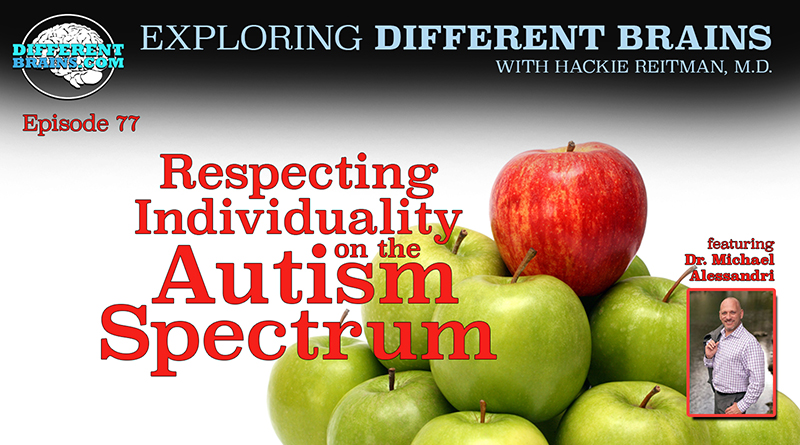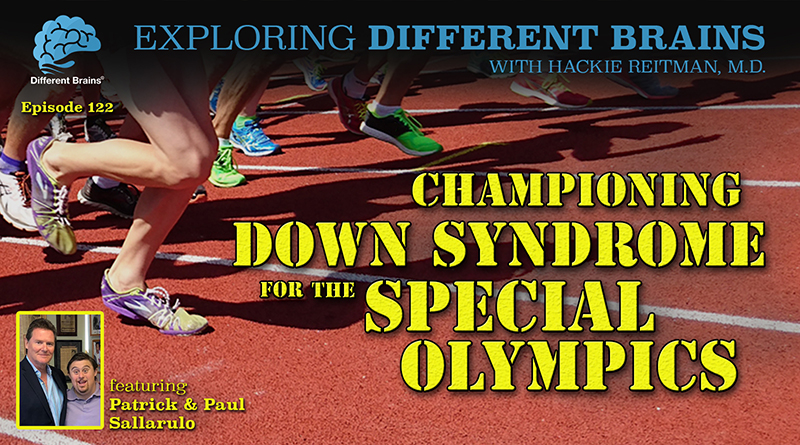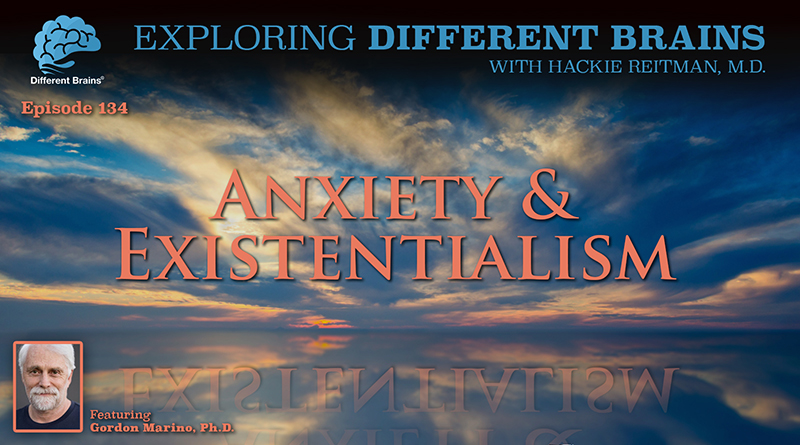Pioneering Workplace Inclusion, with Dr. JR Harding | EDB 297

Celebrated disability advocate and author, FSU’s Dr. JR Harding, discusses his work helping the next generation of business leaders embrace inclusion.
Dr. Harding is a recognized disability leader with over 37 years of personal and professional experiences within the disability community. He is a two-time US Presidential appointee, seven-time Florida gubernatorial appointee, and has made significant contributions to national, state and community public policy advancing the independence and self-sufficiency of persons with disabilities.
He is the author of 2 five-star books (Now What? and ADA Adventure). He is the 1st person with a significant disability to graduate from both Leadership Florida and Leadership Tallahassee. His commitment to community service is a constant and is currently serving on Evergreen Life Services (ELS), the Florida Alliance for Assistive Services and Technology (FAAST), The Florida Network on Disabilities (FND), Blueprint 2000 Citizen Advisory Committee (CAC), and the Delta Airlines Disability Advisory Board.
He works full-time for Florida State University (FSU) as a faculty member for the College of Business within the Management Department. He and his lovely wife Erika live and work in Tallahassee, Florida.
For more about JR: jrharding.com
Or to contact him through FSU: business.fsu.edu/person/jr-harding
AUDIO PODCAST VERSION:
Or look for us on your favorite podcast provider:
iTunes | Stitcher | SoundCloud
FULL TRANSCRIPTION
Note: the following transcription was automatically generated. Some imperfections may exist.
DR HACKIE REITMAN (HR): Hi, I’m Dr. Hackie Reitman. Welcome to another episode of Exploring Different Brains. And today I’m excited to welcome back an old friend of ours, Dr. JR Harding. He’s one of my heroes. I’ll tell you why later. He’s an FSU professor. He’s an author. He’s a speaker, but he’s really a true champion for those of us with disabilities. Welcome back, JR.
DR JR HARDING (JRH): Oh, thank you. It’s always a pleasure to be with you to be with friends, and to meet new friends through your international audience telling the story and the different journeys of living an active and fulfilled life as a person with a disability.
HR: And you are a professor at FSU. So I want to start off with, tell us about the special courses that you’re teaching and where you’ve made a difference at this major university?
JRH: Oh, well, thank you. First I I need to give FSU a shout out. Because they have embraced the idea of diversity. They’ve embraced the idea of inclusion. And they’ve embraced the idea of empowerment of students, and alum and their faculty with varying abilities, so to speak. And I teach in the College of Business Management Department, specifically three courses. One is called MAN 4310. The other is MAN 4143 leadership and the other is an IDS 1107. So most of my students are juniors and seniors finishing up their college degree in Management, HR, risk management, maybe it’s finance. But then other students are just beginning their journey, specifically that of freshmen with disabilities or entering the post secondary environment. And as we know, well, and many of your audience members know that there’s a big difference between K 12 systems, and mom and dad in the system, making decisions for young people versus that now young adults who need to self identify, advocate and adapt to this sometimes unfriendly world that wasn’t necessarily built for individuals with disabilities. But yet we figure out how to navigate accommodate and excel in environments that can be uniquely challenging for the various disabling conditions. Whether it’s, you know, a dyslexia, it could be autism, it could be spinal cord injury, it could be hard of hearing, or it could be low vision or blindness. It doesn’t matter we we meet this backdrop. So I’m really excited to talk about this MAN 4310 course, which is titled, workforce inclusion through the eyes of employees and staff with disabilities.
HR: Healer audience a little bit about your rather minor disabilities.
JRH: My “minor”, right,
HR: You’ve made the minor because nothing stops you you like indestructible but go ahead.
JRH: I think I’m beginning to run out of my, my nine lives, right? Similar to you and and your heavyweight days that at some point, you got to throw in the towel and get out of the ring. But it’s not time yet. I’m actually coming up on my 40th anniversary of living an active life with spinal cord injury. So on September 25 1983, I became a quadriplegic in a blink of an eye. I tried to walk away from that school yard disagreement and turn the other cheek can do the right thing. And I was grabbed from behind and thrown down to start a schoolyard fight and just landed funny. And just like that, I became a quadriplegic. 15 years later, having reconciled the drama, having learned how to live independently, having achieved A few college degrees, entered the workforce. And I was finishing my doctorate. I went through the windshield at 75 miles an hour, and broke both knees, right above the knee, the left shoulder, and then the spinal cord for the second time, and became more of a quadriplegic. And then, of course, living with my own neurodiversity, and struggled with a little dyslexia. Still, do we all do, we just learn how to work around it, and my own self addiction issues, and having to get some support, and some intervention and that space. So you’re quite right, I got a handful of disability merit badges. And I’ve, I think I have been a bit of a pioneer in this journey, to find my manifest destiny or my my bliss. And my blesses being that educator, being an advocate of changing the way people think about inclusion, and the possibilities and independent living for people with disabilities.
HR: Now you tackle big organizations too when I say tackle, you embrace them, you bring them into the fold, you educate them, let’s talk about that strategy and how it’s going.
JRH: Well, some of those could be right in corporate America, it could be Disney, it could be Delta Airlines, it could be a bank, it could be apartment complexes, it could be recreation, it could be the state park system. So all of those venues and partners. To me, it’s just folks who just haven’t had the Kool Aid, like you just had right now. Right. And through our inclusion through our accessibility standards, we’re starting to realize like we have, through the COVID that accommodations work for everybody. And that everybody needs a little helping hand, and that it shouldn’t be perceived as special, but appropriate and necessary tools for everyone to excel. And so it’s been exciting to move the bar in areas like employment, physical access, cruise ships, air travel, and employment issues for people with disabilities over the past 40 years.
HR: Now, let’s just talk about two of the companies you have a special relationship with Disney and Delta. Okay. To tell us about some of the differences going on with these organizations, if you’re at liberty to do so.
JRH: Oh, let’s just talk on it from generalarities. And the sense that both companies believe in customer service. Both companies believe in making dreams come true. Right. Both companies believe that they are richer, better and stronger, by allowing the family or the individual to independently enjoy their services.
HR: You brought up just such an interesting point. Many times, we feel that, oh, the companies are doing us a favor being humanitarian, but I like the way you appeal to their bottom line. And the same way we do and we advocate for inclusion in neurodiversity. Don’t do it to be nice. Do it to improve your bottom line. Talk about that a little bit.
JRH: Well that’s the bottom line, right, as we’re talking 3 4 5 600 billion dollars in disposable income within the disability community. Right. So going back to your point, are you building a business that’s going to leave 20% or $500 billion on the sidelines? Or, right, are you going to just simply be satisfied with less profits? Less productivity, less engagement, less audience, right? It doesn’t make sense and We have learned that investing, right and areas that celebrate or embrace the different populations just fundamentally do better. I mean, think about, for those of you who are not in Florida, or in the southeast, think about our, our Publix grocery stores, we go to the Publix grocery store, wanting to get a good product, but to it’s a safe space, and a space that celebrates our various abilities, because that’s their values as their culture. And you know what, they actually get away with charging us a little more for this experience. Nobody cares, because as worth the ticket, it’s worth the price tag.
HR: So there are a lot of different stages that an organization goes through when they are trying to fill a position to having someone long term in that position. Can you take us through the various kinds of accommodations that might be done along the way?
JRH: Well, yes, I’m one of the tenants in my class and the MAN 4310, which is about workforce inclusion. There is a seventh tenet are bullets to measuring the success leading the way, right building a business of culture, having that pipeline of outreach and recruitment in internships, grabbing folks, right? You and I remember at age 12, and 13, we were shoveling snow and cutting grass, right? Or we were helping people change the roofs? Well, people now have different kinds of internships. So why should we be giving this next generation, those appropriate spaces in our office environments, or our construction companies, or lawn care companies? So how about then hiring and keeping the best talent through inclusive training, right, accessible technologies, making sure people have the tools they need on the job as quickly as possible, to be able to start earning their paychecks.
HR: And that’s a natural segue to, in your course, where you cover so much of this, let’s talk about universal design. What role does that play?
JRH: Well, thank you, that’s, that’s not a whole day and a half, two days worth of lectures, right. And Universal Design has seven principles involved. And it’s the next evolution of what access is When you go into a property, or business, or a hotel, or a park, and it just feels good. There aren’t barriers, you’re not standing there waiting for someone to open the door for you. Or you’re able to independently access all goods and services. It just simply makes good sense line. And so building spaces and programs under the UD principle, you know what? It removes the need to have as many reasonable accommodations, because access has been built in. So if you think about why did the iPhone work so well? Well, it was intuitive. It was logical, it was simple to use. It’s kind of like going to the ATM, you can do that whether you’re visually impaired or not visually impaired, it’s intuitive. They all operate the same way. Well, that’s the same idea. And some of the challenges I put on my students is to go out and look at business businesses, look at state and local government operations and say, “Hey, are we meeting a minimum standard hair where you still feel a little different?” As opposed to a business who brought the universal design component where you just simply integrate seamlessly and natural life.
HR: What is the feedback been on your course from your students?
JRH: Well, that’s first one, you have hundreds of students, you always have a few who are the naysayers and they say, “you worked me too hard”. Okay. But, you know, most of the students will say, and if you Google, they rank professors now and things like that. And so there’s all kinds of talk on the straight of what’s this faculty member like, and they will all say, he worked you hard, but the work is applicable, the work is real world, and the work makes sense for my career? Right? I’m just simply touched, the other day I received an email from the student is that, “Oh, my God, I just saw this video. And this was what you were talking about. This is why I’m now in the HR field.” Or you got another email coming back and said, “I’m still talking to my colleagues about some of the exercises you made us do. And I’m more prepared to excel right in the workforce than the others.” Or a really simple piece is about making accessible to occupants being able to communicate, and any mode on any platform, and which anyone with any ability, can read, understand and react to.
HR: Very well said, how can our audience want to learn more about you learn more about you?
JRH: Oh, well, you’re too kind Hackie. And the audience can learn more about me by googling Florida State University, going through my personal webpage at jrharding.com. Or they can simply call me, I would be happy to to accept their calls at 850-510-4628. There are two books as you indicated, oh, we have two books out there. One called “Now What” and the other called “ADA Adventures”, right? Living that active life from travel to politics, to workforce, to health care, to independent living to about spousal relationships, right. It’s all a bit of a challenge for us. But it’s one that I think most of us thrive on learning how to be engaged, and a members of the community.
HR: Is there anything else you’d like to cover that we have not touched on?
JRH: Well, I think, yes. The workforce inclusion class: the purpose really was how do we prepare the next generation of leaders, right, to tap into the overlooked and underutilized population, which is people with disabilities? But we fundamentally bring greater innovation, greater dedication, right, and the ability to solve problems, and to see goods and services in a way that other members of the workforce do not. And so the class is tailored to take the 80% of the population. Right or wrong, they just simply haven’t experienced the disability community. So 80% are out there becoming leaders, without any idea how to tap into that 500 600 700 800 billion dollars worth of this discretionary resources out there. And so how do we then give them the education, the empowerment and the engagement to be a part of and be unafraid of the 20% of us who are living with various levels of disabilities? And so as we make that fraction, smaller are closer together. The idea of universal design and the need for special laws and special tools will continue to be reduced. Because the truth is, we are better off through our inclusion of people with disabilities because what’s good for me and my family is really good for Hackie’s family
HR: and good for America and good for the world.
JRH: Right.
HR: Well, it’s no wonder you’ve been a two time US presidential appointee, a seven time Florida gubernatorial appointee. You’ve been leadership, Florida leadership Tallahassee, Florida Network on Disabilities, Citizens Advisory Committee, Delta Airlines Disability Advisory Board, and the list goes on and on. JR great to hang out with you keep up the good work and look forward to seeing you again soon.
JRH: Sounds wonderful. Bye bye.




